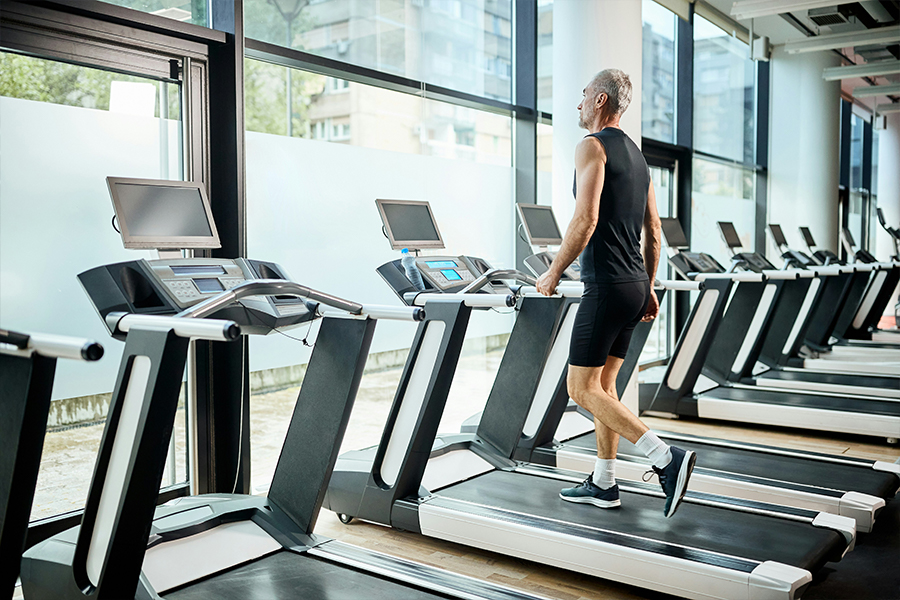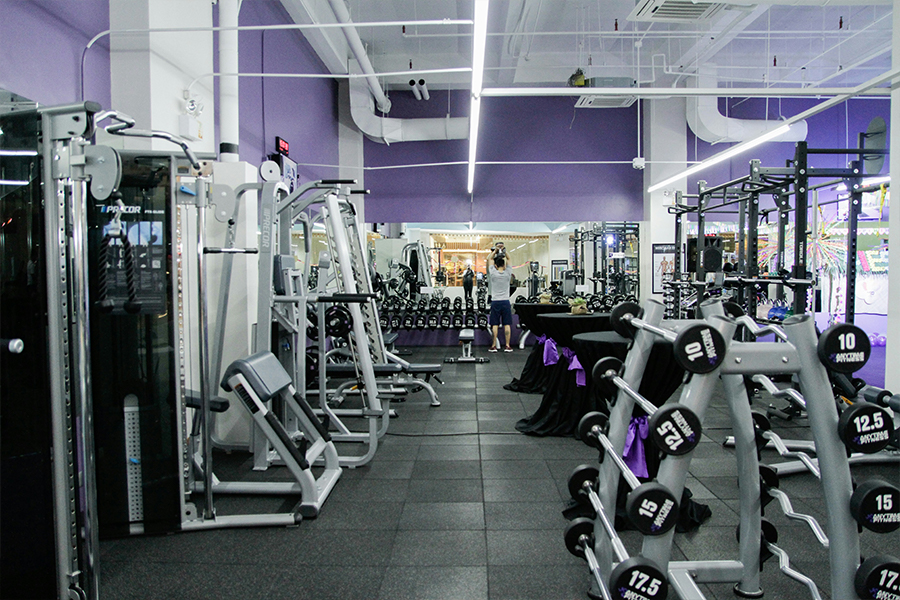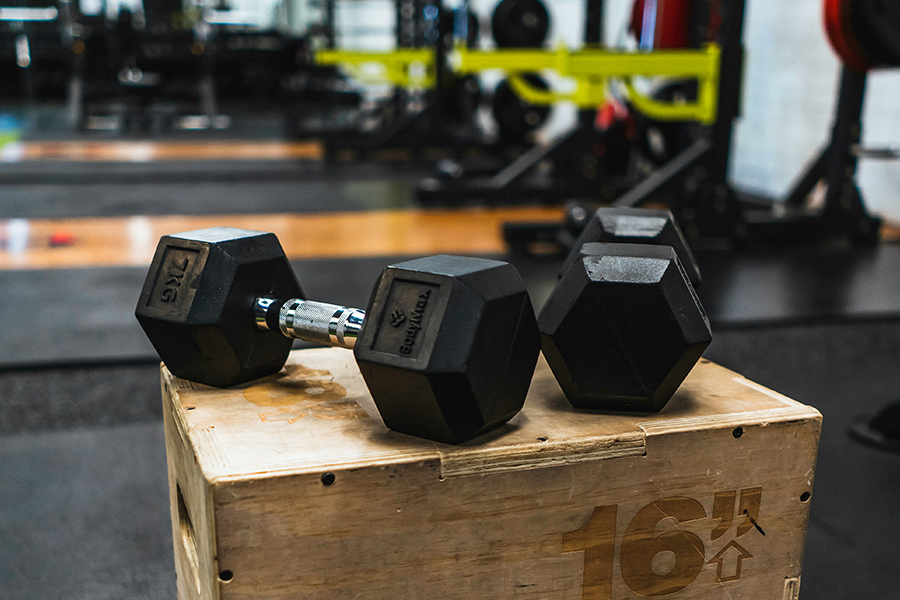When it comes to creating an inspiring and functional environment in commercial gyms, lighting plays a pivotal role. Not only does it enhance aesthetics and atmosphere, but it also impacts gym-goers’ motivation and performance, while offering cost-effective solutions for owners. This guide explores the best lighting options for gyms to maximize both customer satisfaction and energy efficiency.
Optimal lighting options for gyms
In the realm of commercial gyms, the significance of lighting cannot be overstated. It is a critical element that not only defines the visual and aesthetic appeal of the space but also plays a vital role in the safety, functionality, and energy efficiency of the environment. Among the myriad of options available, LED lighting emerges as a clear leader, distinguished by its efficiency, longevity, and the quality of light it delivers.

LED lighting – The cornerstone of gym illumination
LED technology has revolutionized gym lighting by offering a solution that is both energy-efficient and capable of providing high-quality illumination. The benefits of LED lights extend beyond their low energy consumption and long service life; they also produce less heat, reducing the cooling requirements for the gym which can lead to additional energy savings. Furthermore, the ability of LED lights to closely mimic natural daylight enhances the overall workout experience, making them an optimal choice for gym environments.
Spotlighting – Creating focus and energy
Spotlights serve as a versatile tool within the gym’s lighting arsenal. They can be strategically placed to illuminate specific areas, such as equipment zones, walking paths, or focal points, adding depth and dimension to the space. The directed light from spotlights can enhance the visibility of machinery and safety signs, contributing to a safer workout environment. Additionally, the dynamic effects achievable with spotlights can invigorate the gym atmosphere, stimulating motivation and energy among gym-goers.
Integrating general and targeted lighting solutions
The harmonious integration of general lighting and spotlights forms the backbone of an effective gym lighting strategy. General lighting provides the foundational layer of illumination, ensuring a uniformly lit space that is safe and inviting. By incorporating targeted spotlights, gyms can introduce layers of lighting intensity, focusing on areas that require additional visibility or wish to highlight architectural features or equipment. This layered approach allows for a customized lighting environment, adaptable to the diverse needs of different gym areas, from cardio zones to weightlifting sections and group exercise studios.
Adjustable lighting systems for enhanced atmosphere
Advancements in lighting technology have introduced systems that allow for the adjustment of light intensity and color temperature. Such systems enable gyms to adapt the lighting atmosphere to match the time of day or the specific activity taking place. For example, a more calming, warm light can be used during yoga classes, while brighter, cooler lights can energize high-intensity training sessions. This adaptability not only improves the functionality of the space but also contributes to an optimal workout environment, catering to the psychological and physical needs of gym users.

Key considerations for different commercial gym lighting ideas
Elevating strength training zones
Strength training sections demand an illumination strategy that focuses on visibility and safety. Optimal lighting in these areas ensures that users can navigate the space safely, identifying equipment and free weights without the risk of injury. The goal is to eliminate shadows that could obscure equipment edges or floor markings, which is paramount for performing exercises safely. Incorporating direct overhead lighting that evenly distributes light across the area can help in achieving this. Additionally, the use of task lighting can accentuate specific stations or pieces of equipment, guiding the user’s focus and enhancing the functional use of the space.
Group exercise rooms
The dynamic nature of group exercise rooms requires a lighting approach that can transition seamlessly between different activity types. These spaces benefit from a lighting design that supports the varying energy levels and atmospheres of classes offered. Implementing advanced lighting systems that allow for quick adjustments in intensity and color can mirror the class’s pace and mood, from the calming ambiance of a yoga session to the vibrant energy of a dance fitness class. Such adaptability not only enriches the workout experience but also supports instructors in creating an immersive class environment.
Locker Rooms and reception areas
The transition spaces in gyms, such as locker rooms and reception areas, play a crucial role in the overall member experience. In these spaces, lighting should foster a sense of comfort and warmth, welcoming members as they arrive and providing a soothing atmosphere as they prepare to leave. Indirect lighting that casts a soft glow can reduce glare and create a relaxed environment, while accent lighting can highlight architectural features or décor elements, contributing to the aesthetic appeal of these areas. The strategic placement of lighting fixtures can also ensure that locker rooms are well-lit, promoting safety and ease of use for members.
Safety and visibility in cardio and functional areas
Cardiovascular and functional training zones require a careful balance between creating an energizing atmosphere and ensuring user safety. Bright, evenly distributed lighting helps members stay focused and alert during their workouts, while minimizing the risk of accidents on treadmills, bikes, and other equipment. In functional training areas, where movement patterns can be complex and space is versatile, clear visibility is essential. Lighting solutions that provide uniform illumination help in demarcating workout zones and supporting safe exercise execution.

Dynamic gym lighting throughout the day
Implementing IoT (Internet of Things) LED lighting systems can enable dynamic lighting changes throughout the day, optimizing both energy consumption and the workout experience. These systems can automatically adjust brightness and color temperature based on the time of day or specific schedules, contributing to an energy-efficient operation and a dynamic environment for users.
Continuous operation and energy savings
Given that gyms often have long operating hours, it’s important to consider lighting solutions that support continuous operation without compromising on energy efficiency. LED lights are not only energy-efficient but also have a longer lifespan, reducing the need for frequent replacements. Introducing motion sensors in less-used areas, like locker rooms and bathrooms, can further reduce energy consumption and lower operational costs.

Summary and checklist for best practices
To summarize, here is a brief checklist for optimizing gym lighting:
- Implement energy-efficient LED lights for main lighting.
- Use spotlights to highlight specific areas or equipment.
- Consider dimmable and color-adjustable lighting solutions for group exercise rooms.
- Integrate IoT-based lighting systems for dynamic and scheduled light control.
- Install motion sensors in less-used spaces to reduce energy consumption.
- Choose lighting solutions that offer a long lifespan to minimize maintenance and replacement costs.
Recommendations for design in glass areas
For gyms with large glass panels or spaces designed entirely in glass, it’s crucial to consider lighting that complements natural daylight. During the day, sun-protective treatments on the glass can help control heat and glare, while strategically placed IoT LED lights can ensure even and effective lighting during the evening. It’s also essential to consider how the lighting interacts with natural light to create a comfortable and functional environment for users.
By carefully considering these aspects and implementing smart lighting solutions, gym owners can create a welcoming, energy-efficient, and inspiring environment for their clients. With the right lighting in place, it’s possible not only to enhance the gym-goers’ experience but also to contribute to more sustainable operations.


